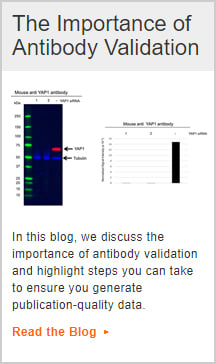IgG: Immunoglobulin G Class

- On This Page
- Properties of IgG
- IgG antibodies
- Related reading
Properties of IgG
Human IgG (immunoglobulin G) is expressed on the surface of mature B cells and is the most prevalent Ig in serum and the major Ig in extravascular spaces. IgG1, IgG2 and IgG3 are complement activators, with IgG3 being the strongest.
Human immunoglobulin subclasses IgG1 and IgG3 tend to strongly bind fragment crystallization (Fc) receptors, whereas subclasses IgG2 and IgG4 bind weakly. IgG is also the only human immunoglobulin to pass from mother to fetus to transfer immunity.
It should be noted, the human immunoglobulin subclass IgG2 does cross the placenta, but it does so weakly.
| IgG |

|
|||
|
Heavy chain |
γ |
|||
|
Light chain |
κ or λ |
|||
|
Molecular formula |
γ2κ2 or γ2λ2 |
|||
|
Valency |
2 |
|||
|
Structure |
Monomer |
|||
|
Abundance in serum (in relation to total immunoglobulins present) |
80% |
|||
|
Carbohydrate content |
3% |
|||
|
Concentration in serum |
10 - 16 mg/ml |
|||
|
IgG subclasses |
IgG1 |
IgG2 |
IgG3 |
IgG4 |
|
Heavy chain subclasses |
γ1 |
γ2 |
γ3 |
γ4 |
|
Heavy chain MW (kDa) |
50 |
50 |
60 |
50 |
|
Light chain MW (kDa) |
23 |
23 |
23 |
23 |
|
Total MW (kDa) |
150 |
150 |
170 |
150 |
|
Distribution |
Intravascular and extravascular |
|||
|
Function |
Secondary response antibody |
|||
IgG Antibodies
Bio-Rad offers a range of human immunoglobulin antibodies for the IgG isotype. In addition to human, we also offer IgG antibodies for a wide range of other target species. Below you will find a list of all of our IgG antibodies. Use the buttons/filters to identify the antibody that fits your exact requirements.
Antibodies for IgG (Immunoglobulin G)
| Description | Target | Format | Clone | Applications | Citations | Code |
|---|
Related Reading
For a full overview of Immunoglobulin classes please visit our Immunoglobulins Classes / Sub-classes page. Alternatively you can view the following individual types:
- IgA Antibodies (Immunoglobulin A)
- IgD Antibodies (Immunoglobulin D)
- IgE Antibodies (Immunoglobulin E)
- IgM Antibodies (Immunoglobulin M)




